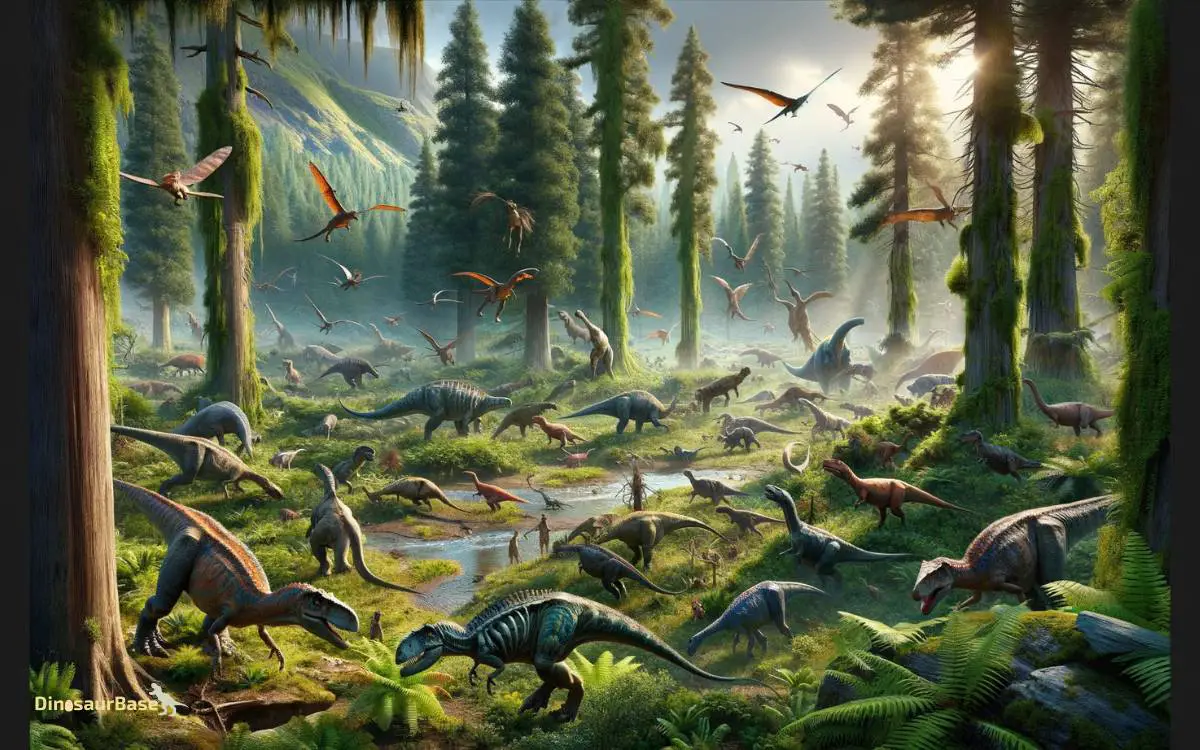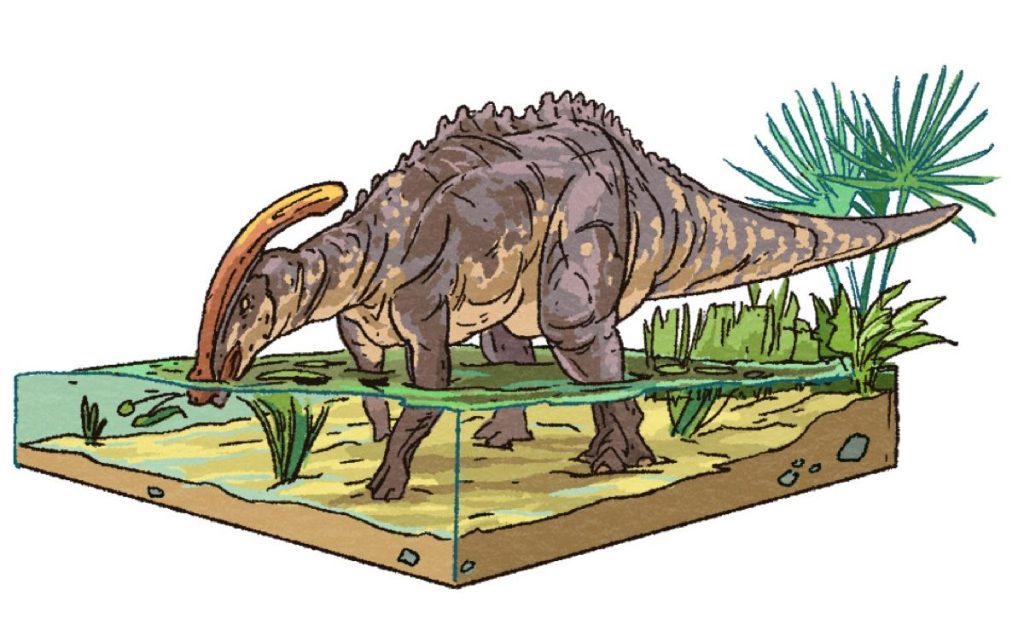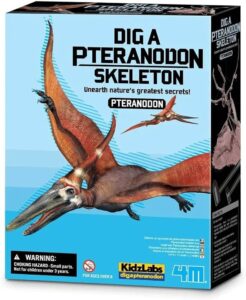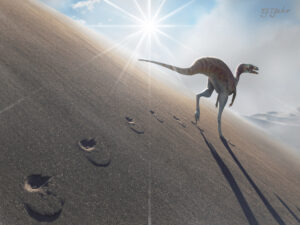What Does a Dinosaur Do Daily? A How-To Guide on Their Habits
Dinosaurs had varied daily routines, involving hunting, foraging, and social interactions. Their habits included eating, moving, and reproducing within their distinct environments.
Delve into the prehistoric world, and you’ll find dinosaurs were once masters of their domain, their daily doings as diverse as the Mesozoic landscapes they roamed.
Each species had its unique lifestyle, with carnivores embarking on relentless hunts, herbivores grazing vast fern prairies, and omnivores scavenging opportunistically.
These ancient creatures also engaged in complex social behaviors, from raising their young to asserting dominance within their packs.
Understanding their daily habits provides priceless insights into the ancient ecosystems that flourished millions of years ago.
An accurate portrayal of these habits offers not just knowledge but a window into Earth’s vibrant past, long before humans entered the scene.

A Glimpse Into The Mesozoic Era
Imagine walking with giants, the ground trembling with every step. The Mesozoic Era offered such a thrilling spectacle.
This time span is famous for its inhabitants – the majestic dinosaurs. From the towering brachiosaurus to the fierce velociraptor, dinosaurs roamed our planet for over 180 million years.
Let’s journey back in time to understand the everyday life of these ancient rulers of the land. Let’s unlock the secrets of the dinosaur daily routine.
Dinosaurs: The Rulers Of The Land
Dinosaurs were the dominant terrestrial vertebrates of the Mesozoic Era. Their reign included a diverse cast, from plant-eating giants to cunning predators. Studies show these creatures had intricate behaviors and lived in complex societies.
- Herbivores roamed in herds, seeking the lushest vegetation.
- Carnivores used advanced hunting tactics to catch prey.
- Parenting skills were evident with nurturing nesting sites.
Dawn To Dusk: A Dino’s Life
Each day was a cycle of survival for dinosaurs. Activities ranged from hunting or foraging for food to protecting their young from predators.
| Time of Day | Activity |
|---|---|
| Morning | Foraging begins for herbivores, predators prepare to hunt. |
| Afternoon | Peak activity, dinosaurs engage in eating or basking in the sun. |
| Evening | Settling down, finding safe spots to rest for the night. |
From dawn till dusk, dinosaurs led active lives. Their day-to-day tasks were not just about survival but also included forming social bonds within their packs or herds.
Studying these magnificent beasts gives us a window into a world long gone but never forgotten.

Credit: www.sciencefriday.com
The Hunt For Sustenance
The Hunt for Sustenance: Picture a world ruled by dinosaurs, creatures magnificent and mighty. But even these colossal beings needed to continue a basic life routine: finding food. Dinosaurs had varied diets, much like animals today.
Some munched on plants, while others craved meat. Let’s discover the dietary dynamics that dominated their daily doings.
Herbivorous Diets
Plant-eating dinosaurs, known as herbivores, roamed in search. They looked for all sorts of greens. Some had long necks to reach high trees. Others had strong beaks to chop tough plants.
- Trees and ferns: Their tall order.
- Flowers and fruits: Sweet treats.
- Conifers: A piney snack.
These gentle giants walked far to find their food. They traveled in herds for safety. Herbivores had different tools like beaks or grinding teeth.
Predatory Behaviors Of Carnivores
Meat-eaters, the carnivores, had a different daily drill. They hunted. With sharp teeth and claws, they stalked their prey. Their keen senses helped them find food. Fast runners could chase. Big ones ambushed.
Some even scavenged for easy meals.
| Carnivore Type | Hunting Strategy | Prey Example |
|---|---|---|
| Small Hunter | Chase down | Lizards |
| Large Predator | Ambush | Larger dinosaurs |
| Scavenger | Clean up leftovers | Remains of others’ hunts |
Carnivores varied in size and strength. They adapted hunting skills fitting their environment. Some worked alone. Others hunted in packs.
Dinosaur Social Lives
Such displays were vital for securing a mate and ensuring the survival of their species.
| Solitary Predators | Herd-Dwelling Dinosaurs |
|---|---|
| Roamed and hunted alone | Travelled and foraged as a group |
| Interacted mainly during mating | Constant social interactions within the herd |
| Relied on stealth and power | Depended on collective vigilance for safety |
Nesting And Reproduction
Welcome to the fascinating world of dinosaurs, where the circle of life begins with the nesting and reproduction habits of these magnificent creatures.
Uncovering the mysteries of what a dinosaur would do daily requires delving into how they cared for their young. Let’s explore how dinosaurs might have nurtured their future generations.
Dinosaur Eggs And Nesting Grounds
Dinosaurs laid eggs, much like birds and reptiles do today. Fossil discoveries reveal intricate nesting grounds, showcasing the care they took in creating safe spaces for their offspring.
Picture large areas, similar to rookeries of penguins, where multiple nests reside close to each other, suggesting a community approach to nesting.
- Nest construction: Dinosaurs likely used vegetation and mud to build nests.
- Clutch size: Varies among species, from just a few eggs to many.
- Incubation: Parental warmth or the sun helped hatch these eggs.
- Eggshells: Thicker than modern birds, offering more protection.
Growing Up Dino: From Hatchling To Adult
The journey from a tiny hatchling to a towering adult was fraught with challenges. Not all dinosaurs reached adulthood, with survival rates depending on various factors including species, habitat, and parental care.
| Stage | Features | Challenges |
|---|---|---|
| Hatchling | Small, vulnerable, reliant on parents/nest | Predators, food scarcity |
| Juvenile | Growing independence, learning survival skills | Competition, learning to hunt/find plants |
| Adult | Reaching full size, capable of reproduction | Defending territory, finding a mate |
Some species may have exhibited nurturing behaviors, guiding their young through their most vulnerable stages.
Others would leave their offspring to fend for themselves shortly after hatching. The evolutionary strategies varied wildly across the gigantic tapestry that is the dinosaur lineage.
Migration And Movement Patterns
Ever wondered about the long-gone giants’ mysterious wandering ways? Let’s dive into dinosaur migration and movement patterns.
Surprisingly similar to modern animals, these ancient beasts followed seasonal cues for survival. Understanding their movements gives us powerful insights into their daily lives.
Tracking The Herds
Dinosaurs moved in groups, much like elephants or wildebeests today. By studying fossilized footprints, scientists observe herd behavior and social structures.
These tracks, sometimes spanning for miles, show paths where dinosaurs once roamed in search of food or nesting grounds.
- We see patterns in their steps.
- Footprints reveal direction and pace of travel.
- Varied sizes of prints suggest herds were multi-generational.
Fossil tracks in places like Colorado’s Purgatoire River trackway help us map these ancient journeys.
Scientists look for certain features:
| Track Feature | Interpretation |
|---|---|
| Parallel tracks | Consistent group movement |
| Crossing patterns | Social interaction or chaos |
| Spacing and depth | Speed and weight of dinosaurs |
Climate Influence And Territorial Shifts
Much like birds fly south for the winter, dinosaurs might have migrated to stay comfortable and find resources.
Fossil evidence hints at movements triggered by weather change and food availability. This knowledge helps paleontologists piece together the puzzle of prehistoric living environments.
Several factors influenced these journeys:
- Seasonal temperature variations pushed dinosaurs to warmer or cooler areas.
- Flora changes drove herbivores to places with abundant plant life.
- Carnivores followed, tailing the plant-eaters that were their prey.
Massive bones and teeth found in different layers of earth paint a picture of these travel patterns. By comparing geological deposits, scientists can estimate periods of settlement and migration.
The dinosaur world thrived on adaptability. Climate and resource shifts weren’t barriers but road maps for survival.
Even without direct observation, the fossil record allows us to trace their footprints across time.
Survival Tactics
Imagine a world where titanic lizards roam the earth. To survive, dinosaurs developed a set of tactics as complex and fascinating as any modern animal.
Let’s delve into their daily habits to understand how these prehistoric creatures navigated the perilous dance of survival.
While we can’t travel back in time, let’s reconstruct a day in the life of a dinosaur from fossil clues and scientific theories!
Defense Mechanisms And Armory
Dinosaurs needed robust defense strategies. Predators lurked around every corner. Many species evolved hardened scales, horns, and sharp spikes to ward off attackers.
Take the Stegosaurus, for example, with its backbone-mounted plates and lethal tail spikes, it was no easy target.
Camouflage also played a crucial role. Just as modern animals blend into their surroundings, dinosaurs like the Ornithomimus used colors and patterns to become nearly invisible in dense forests and grasslands. These tactics kept them safe while foraging or nesting.
Inter-species Interactions And The Food Chain
Hierarchy ruled the ancient ecosystems. Every dinosaur knew its place. Apex predators like the Tyrannosaurus rex sat at the top, while herbivores formed groups to protect themselves and find food. This interaction is fundamental to understanding dinosaur dynamics.
- Herbivores grazed together for safety.
- Carnivores had to outsmart both prey and rivals.
- Omnivores adapted to diverse diets, eating plants and small animals.
These food chain interactions were not static. They changed with the landscape, the availability of food, and the evolution of species. Cooperation and competition were daily realities for these ancient giants.

Credit: www.sci.news
Do Dinosaur Daily Habits Affect Their Height?
Many paleontologists believe that understanding the daily habits of dinosaurs is crucial for measuring dinosaur heights accurately. By analyzing their bone structure, diet, and activity patterns, researchers can gain insight into the potential factors influencing their growth and development.
How Do Dinosaurs’ Daily Habits Change When Shifting from Bipedal to Quadrupedal Movement?
The bipedal to quadrupedal transition tips can greatly impact dinosaurs’ daily habits. Moving from two legs to four alters their locomotion and behavior patterns. These tips help ensure a smooth transition, enabling dinosaurs to adapt to new ways of moving and navigating their environment. From adjusting their posture to modifying their hunting techniques, these tips assist dinosaurs in mastering their quadrupedal movement.
How Do Herbivorous Dinosaurs’ Daily Habits Differ from Carnivorous Dinosaurs?
Understanding planteating dinosaurs can provide insight into their daily habits. Herbivorous dinosaurs spent much of their time grazing and browsing for plants, while carnivorous dinosaurs focused on hunting and scavenging for meat. Their different diets influenced their behavior, movement, and overall lifestyle in the prehistoric world.
Frequently Asked Questions Of What Does A Dinosaur Do Daily? A How-to Guide On Their Habits
What Did Dinosaurs Do On A Daily Basis?
Dinosaurs engaged in hunting or foraging for food, protecting their territory, mating, laying eggs, and caring for their young daily. Their routines also included resting and socializing within their species.
What Do Dinosaurs Do In The Morning?
Dinosaurs likely engaged in searching for food and basking in the sun to warm their bodies after the cooler nights, similar to the behavior of modern reptiles.
What Is Dinosaur Habitat?
Dinosaur habitats varied widely and included forests, swamps, deserts, and plains. They thrived globally, from tropical to temperate regions, adapting to diverse ecosystems over millions of years.
How Do We Know Dinosaurs Behavior?
We infer dinosaur behavior from fossilized tracks, bone structures, and nest sites. Comparing these findings to modern animals helps to form educated theories about their activities and social dynamics.
Conclusion
Dive into the past with our paleo-insights. Uncover the daily routines of dinosaurs, from grazing patterns to nesting rituals.
Remember, these ancient creatures were more than movie monsters—they were living beings with complex behaviors. Keep exploring and imagining a day in the life of a dinosaur.
Share your thoughts and join the prehistoric journey!




